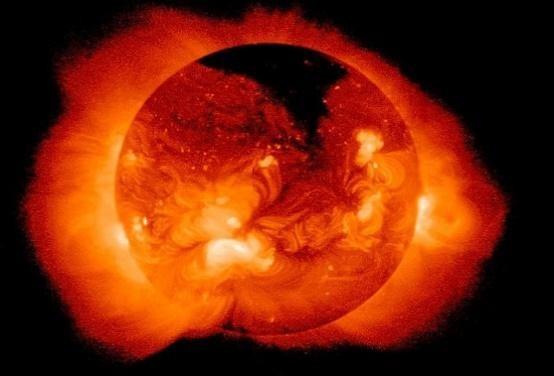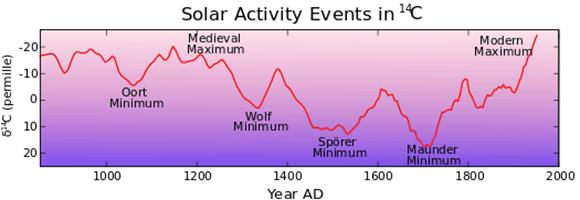
2 minute read
Why are there climate variations on Venus, Mars, Jupiter and Earth?
4. Which components of solar radiation change and what is the effect?
The sun is not a constantly shining "light bulb". There are strong changes in all parts of the electromagnetic spectrum, e.g. in the solar magnetic field. This can be seen in the number of solar spots (in the left image, which shows the intensity in the X-ray region, the bright spots) and in coronal holes (dark areas).
In the right image (https://de.wikipedia.org/wiki/Koronales_Loch), A indicates the closed magnet field lines. Where they pierce the solar surface it is a bit cooler, thus darker and visible to us as sunspots. B is a coronal hole - an open magnetic field that is not visible to the human eye. Sunspots and coronal holes are sources of solar wind. The solar wind consists mainly of hydrogen and helium ions and electrons, which flow away from the Sun at high speed and reach Earth after a few days, causing the aurora, for example. The solar wind causes a strong magnetic field which, in conjunction with the Earth's magnetic field, keeps cosmic rays away from the Earth to a large extent. The cosmic radiation also consists mainly of water substance ions (protons), this time from other solar systems and with much higher energy. In the Earth's atmosphere, these protons form condensation nuclei for the water vapor, thus leading to droplet formation and ultimately to clouds. More solar wind means less cosmic rays hitting the earth, thus less condensation nuclei and less clouds and consequently higher temperatures outside the deserts. Because cosmic rays have a direct influence on certain radioactive isotopes such as 14 C in the atmosphere, solar activity and cosmic rays can be traced back over millennia. The next image shows the change in carbon-14 content, and thus solar activity, over the last 1100 years (https://en.wikipedia.org/wiki/Maunder_Minimum).

There is a clear correlation with the Medieval Warm Period and the Little Ice Age from 1500 to 1850, which coincided with the Spörer and Maunder minima of the sunspot number. In the 20th century,
there was a sharp increase in solar activity and thus a decrease in cosmic rays, which is why the climate recovered from the pessimum (as cool phases were previously called) of the Little Ice Age.
In 2006, Professors Georgieva and Kirov of the Bulgarian Academy of Sciences documented that there are many geomagnetic storms that do not operate in the wavelength range visible to the human eye 3










